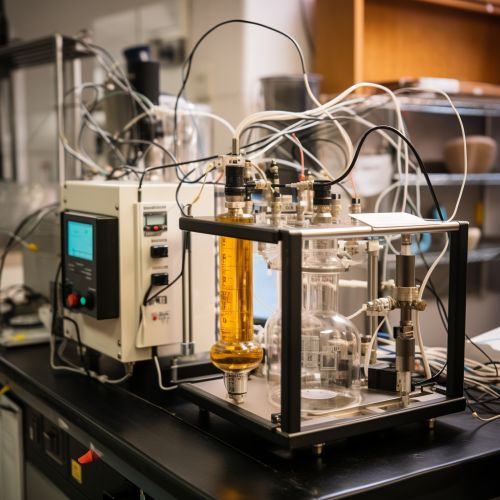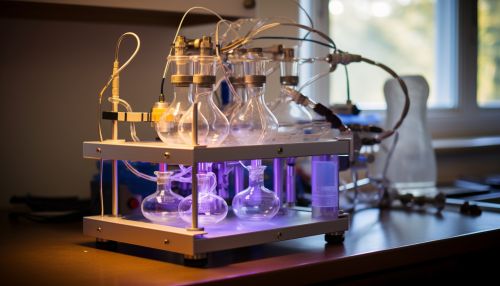Liquid Chromatography
Introduction
Liquid chromatography (LC) is a technique in analytical chemistry used to separate the components in a mixture. It involves passing a sample, which contains the analyte, in the mobile phase, often in a solution or suspension, through a column that contains a stationary phase. The different components in the mixture pass through the column at different rates due to differences in their partitioning behavior between the mobile liquid phase and the stationary phase.


History
The development of liquid chromatography dates back to the early 1900s. The technique was primarily used for the separation of colored compounds, such as plant pigments and dyestuffs. The first true liquid chromatography, however, was described by the Russian botanist Mikhail Semenovich Tsvet in 1903. He used a liquid-adsorption column containing calcium carbonate to separate plant pigments, such as chlorophyll, carotenes, and xanthophylls.
Principles
Liquid chromatography operates on the same basic principles as gas chromatography. However, instead of a gas mobile phase, it uses a liquid mobile phase. The principles of liquid chromatography can be divided into several key concepts:
Partitioning
Partitioning is the process by which the analyte partitions or distributes itself between the mobile phase and the stationary phase. The degree to which an analyte partitions between the phases is determined by its relative affinity for each.
Elution
Elution is the process by which the analyte is carried through the column by the mobile phase. The rate of elution is influenced by the partitioning behavior of the analyte, the flow rate of the mobile phase, and the nature of the stationary phase.
Retention Time
Retention time is the time it takes for a particular analyte to pass through the system (from the column inlet to the detector) under set conditions. Retention times are characteristic for a given analyte under specific conditions, so they can be used for identification purposes.
Selectivity
Selectivity is the ability of the chromatographic system to effectively differentiate between different analytes. It is a measure of the relative rates at which different analytes elute from the column.
Types of Liquid Chromatography
Liquid chromatography can be classified into several types based on the type of stationary and mobile phases used, and the interactions that occur between the sample, the stationary phase, and the mobile phase.
High-Performance Liquid Chromatography (HPLC)
High-performance liquid chromatography (HPLC) is a type of liquid chromatography that uses high pressures to force the mobile phase through a densely packed stationary phase. It allows for faster analysis and improved separation efficiency compared to traditional liquid chromatography.
Reverse Phase Liquid Chromatography (RPLC)
In reverse phase liquid chromatography (RPLC), the stationary phase is nonpolar or hydrophobic, while the mobile phase is polar. This is the opposite of normal phase liquid chromatography.
Size Exclusion Chromatography (SEC)
Size exclusion chromatography (SEC) is a type of liquid chromatography where the separation of analytes is based on their size, or more accurately, their hydrodynamic volume.
Ion Exchange Chromatography (IEC)
Ion exchange chromatography (IEC) is a process that allows the separation of ions and polar molecules based on their charge.
Applications
Liquid chromatography has a wide range of applications in various fields, including pharmaceutical, environmental, forensic, and food analysis. It is used for the analysis and purification of organic compounds, the testing of water samples for pollutants, the analysis of food for contaminants, and the detection of drugs in biological samples.
